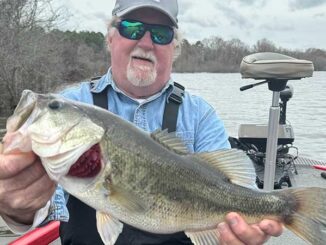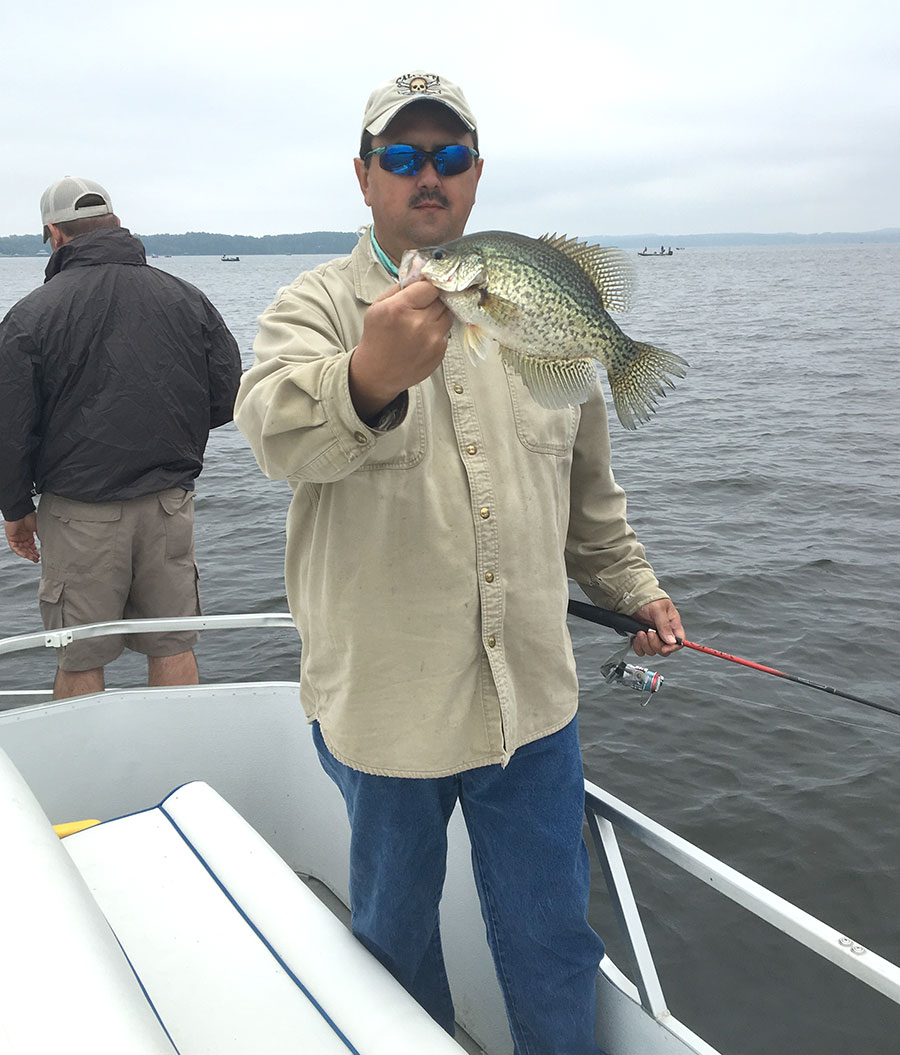
Spring brings on the race to fill livewells with Toledo Bend crappie
Spring is filled with Louisiana anglers in pursuit of a well-known fish referred to by three different names.
Some refer to it as crappie, white perch, or sac-a-lait. No matter what name you prefer, the spring spawn calls many anglers to chase this incredibly popular freshwater fish. And a livewell full of crappie means some good eating back on the shore.
Toledo Bend Reservoir is a nationally known hot spot for bass anglers around the country; however, it is equally as popular among crappie anglers. Tater Reynolds has been fishing Toledo Bend his entire life, and he is an incredibly accomplished crappie fisherman as well as competitive bass fisherman. Reynolds has fished in 22 competitive events, and has 11 Top 10 finishes and two career wins according to Major League Fishing. But he tries not to let that mess up his crappie fishing.
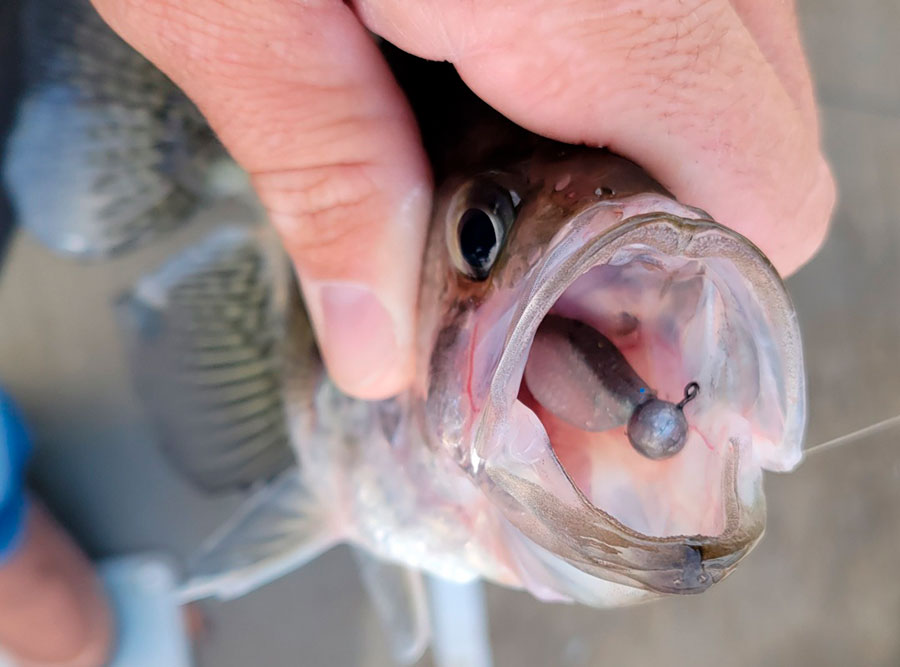
His father, George Jeane, shared his knowledge of being raised on Toledo Bend with his son, especially in regard to chasing crappie. George is an established bass fisherman as well and has a total of 96 events listed on the Major League Fishing data base with 17 Top 10’s and four wins.
The duo make up Jeane Tackle Guide Service at Toledo Bend.
Reynolds noted that Toledo Bend crappie begin the spawn process as early as late January; however, typically about mid-February to late March is the primary window for the spawn. And that means make your plans now. The main contributing factor for the spawn is water temperature in the 54 to 64 degree range.
Grass coming back
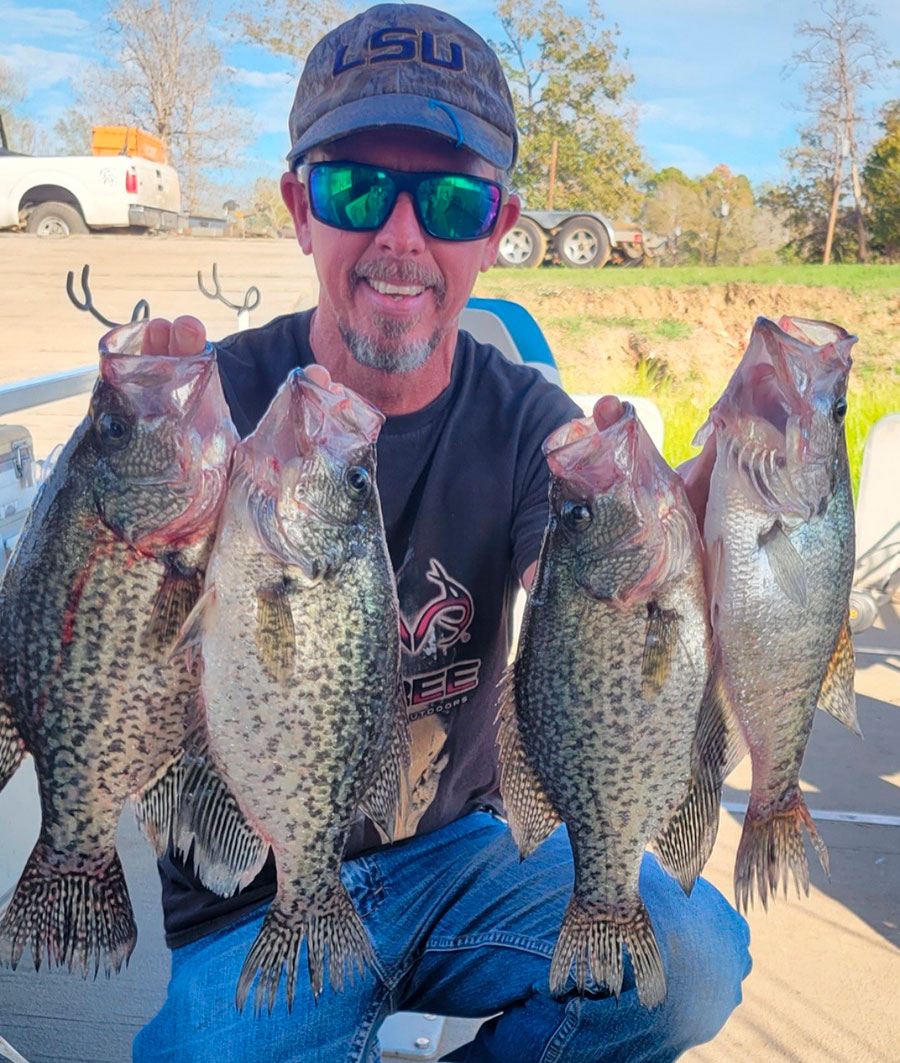
Reynolds made one important observation that has had a great impact on spawn fishing at Toledo Bend.
In 2016 there was plenty of hydrilla that surrounded the shallow breeding areas for crappie; however, a huge kill off of grass removed much of a key staging area for pre-spawn and post-spawn crappie. Reynolds explained that there has been a return of some of the hydrilla grass in recent years and he hopes that trend will continue into 2024.
He uses a light action seven-foot rod with a light action spinning reel. He rigs the reel with 10-pound test braided line and a six-to-eight-pound test fluorocarbon leader about 20 feet long. Reynolds believes this gives him the sensitivity and castability as well as preventing the monofilament line memory that can occur and cause problems.
He uses a variation of baits but can narrow it down to the most effective being a Roadrunner in chartreuse or pink and a 1/32 weight jig head with the Kalins Triple Threat grub in the two inch size. The most productive colors are Bleeding Tennessee Shad and Arkansas Shad. Live bait can also be effective in crappie fishing, but he prefers artificial bait because it is more convenient and, at times, more effective. He prefers to avoid having to stop and get bait, work to keep it alive and the time required to rebait after catching a fish.
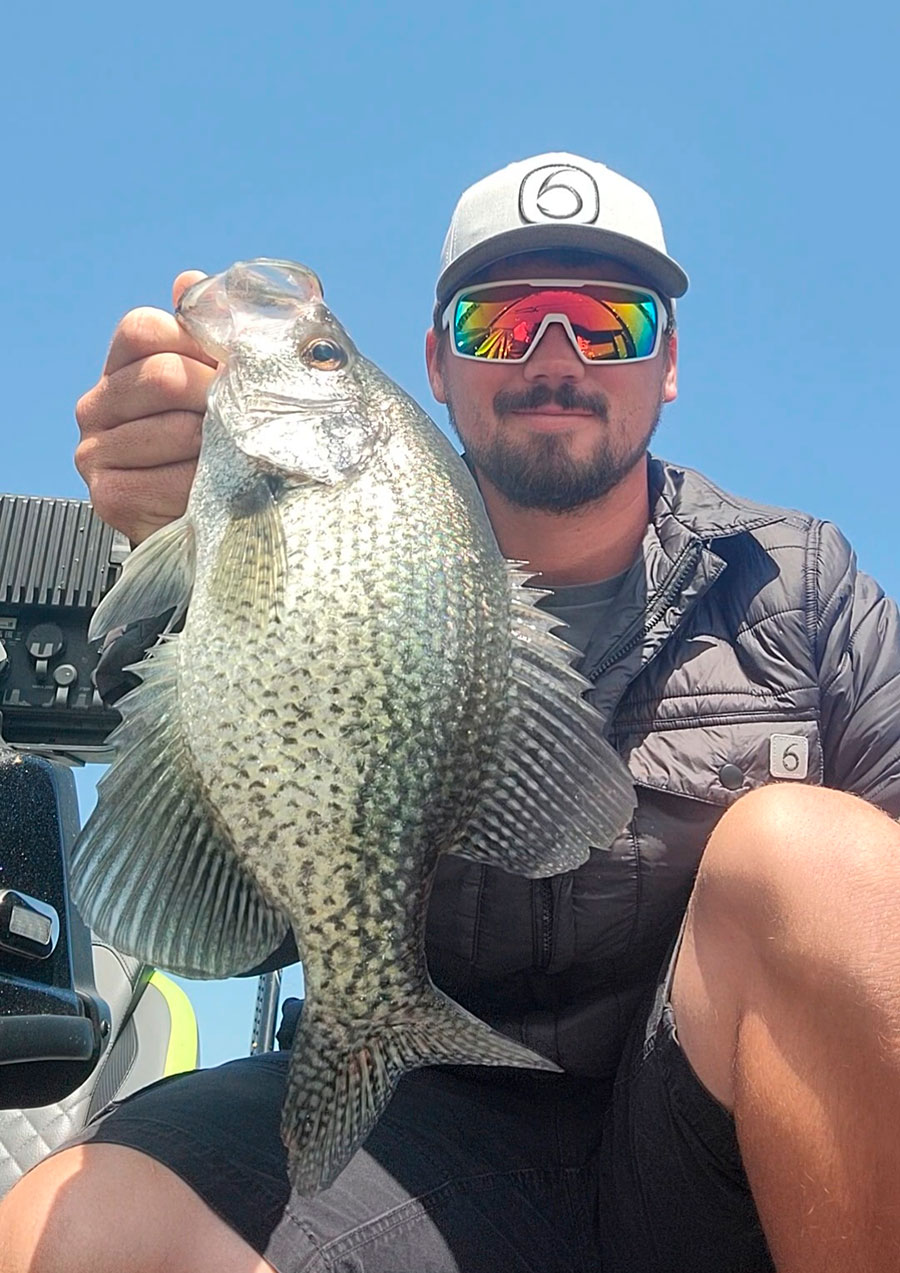
Crappie begin to move from deep water to the edges of the salvinia grass in February of most years to stage for the spawn. He fishes mostly south Toledo Bend and noted that some key areas are Blue Lake and Housen Creek. The prespawn is a process and as the fish move adjacent shallow water, anglers must look for fish to stage along the grass lines or around large stumps with spiderweb like root bases. The crappie will stage at a depth of about 10 to 12 feet of water. If the fish have already moved into shallow water to spawn, they will be in 2 to 6 feet of water.
Two techniques
Reynolds uses two techniques to chase crappie that are either staging in deeper water or spawning in shallow water. For deeper fish, it is often effective to troll the edges of the grass line or the areas just off the shallow water spawn to target the crappie. Many anglers in the state often use the spider rig method for trolling, but Reynolds doesn’t do that.
Often he fishes by just trolling from each side of the boat or the back of the boat as he passes over the 10-to-12-foot submerged grass lines or structure with suspended fish. He uses a setup with a 1/32-ounce jig head with his preferred grub colors and a split shot about one foot up from the bait. This allows the bait to run true and makes it easier to keep the bait in the strike zone.
When the crappie are in an active spawn, Reynolds targets the shallow water and fan casts to areas where he can see holes in the grass or areas of cover. He does not use a cork of any kind and uses a very slow retrieve with a light jig head, noting that an often-overlooked spot is underneath docks during the spawn. Look for an older dock that is broken down with portions of it fallen or a dock that has little or no human traffic and it will often hold a good mess of crappie.
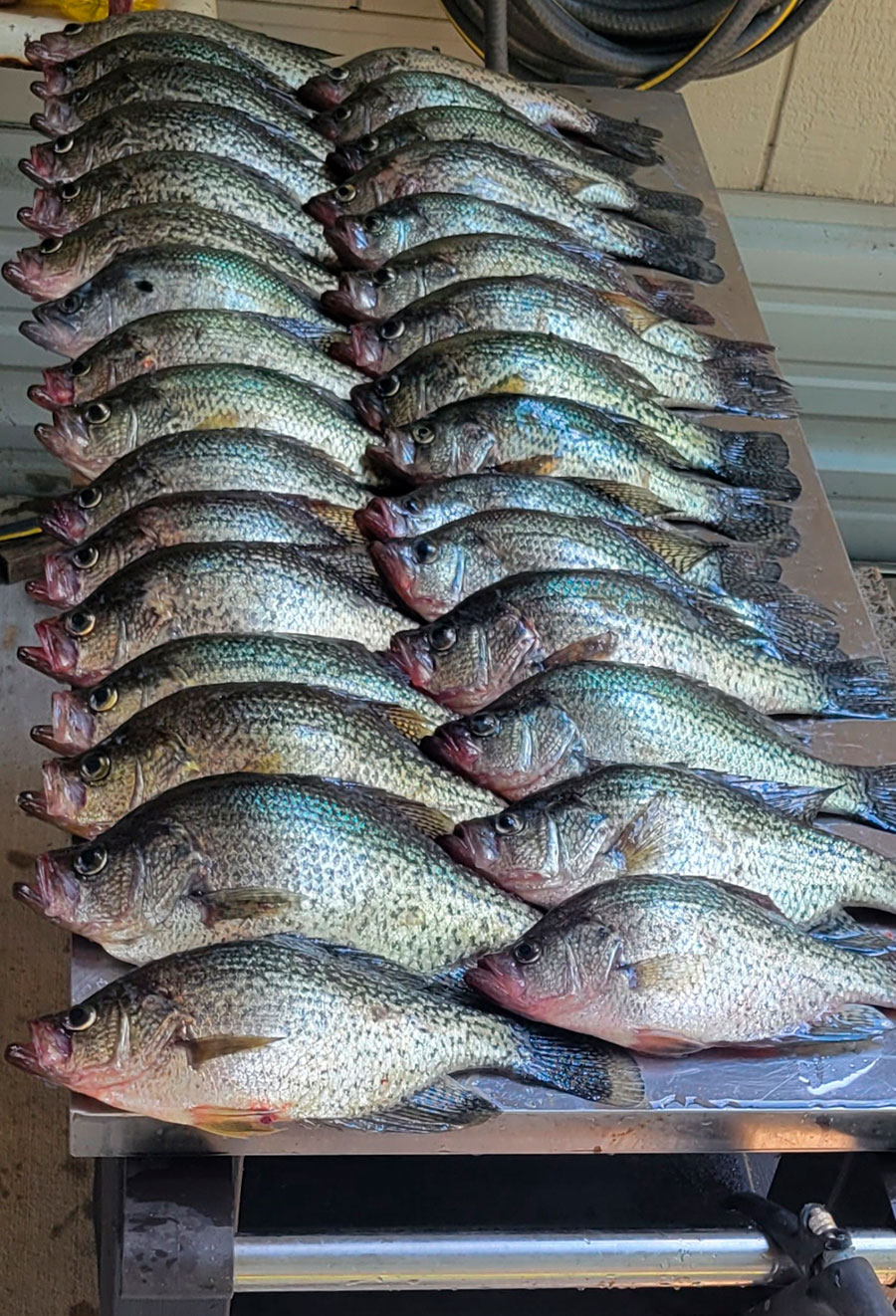
It is important to note that anglers have caught large numbers of crappie on the staging grass lines and the spawning flats of Toledo Bend long before the advent of modern electronics. Anglers without this modern technology should not be deterred from the pursuit of spawning crappie. The use of forward facing, down scan and side scan sonar are incredibly useful tools to locate fish and structure; however, a bit of good old fashion angling, finesse, and “fishing” is required to get them in the boat.
The duo fish the crappie spawning period, but have made a choice not to guide clients during this period for crappie. They prefer to allow the crappie to spawn and then target them after the breeding period in deeper water.
Reynolds ends the spring crappie spawn by putting out fresh green brush in deep water to prepare for early summer crappie fishing.
Reynolds said a few especially important factors for planning a trip to Toledo Bend include watching the water temperatures, looking for a warming trend, avoiding significantly windy days and watching for abrupt weather changes. In windy conditions Toledo Bend can become extremely dangerous, especially for smaller boats.
Anglers on the water all around the great state of Louisiana in pursuit of one of the greatest fish to swim the freshwater bayous, lakes, and rivers face a challenge with a fantastic reward. These fish can bring together old friends, make new friends and feed families no matter what you might call them — crappie, white perch or sac-a-lait.
